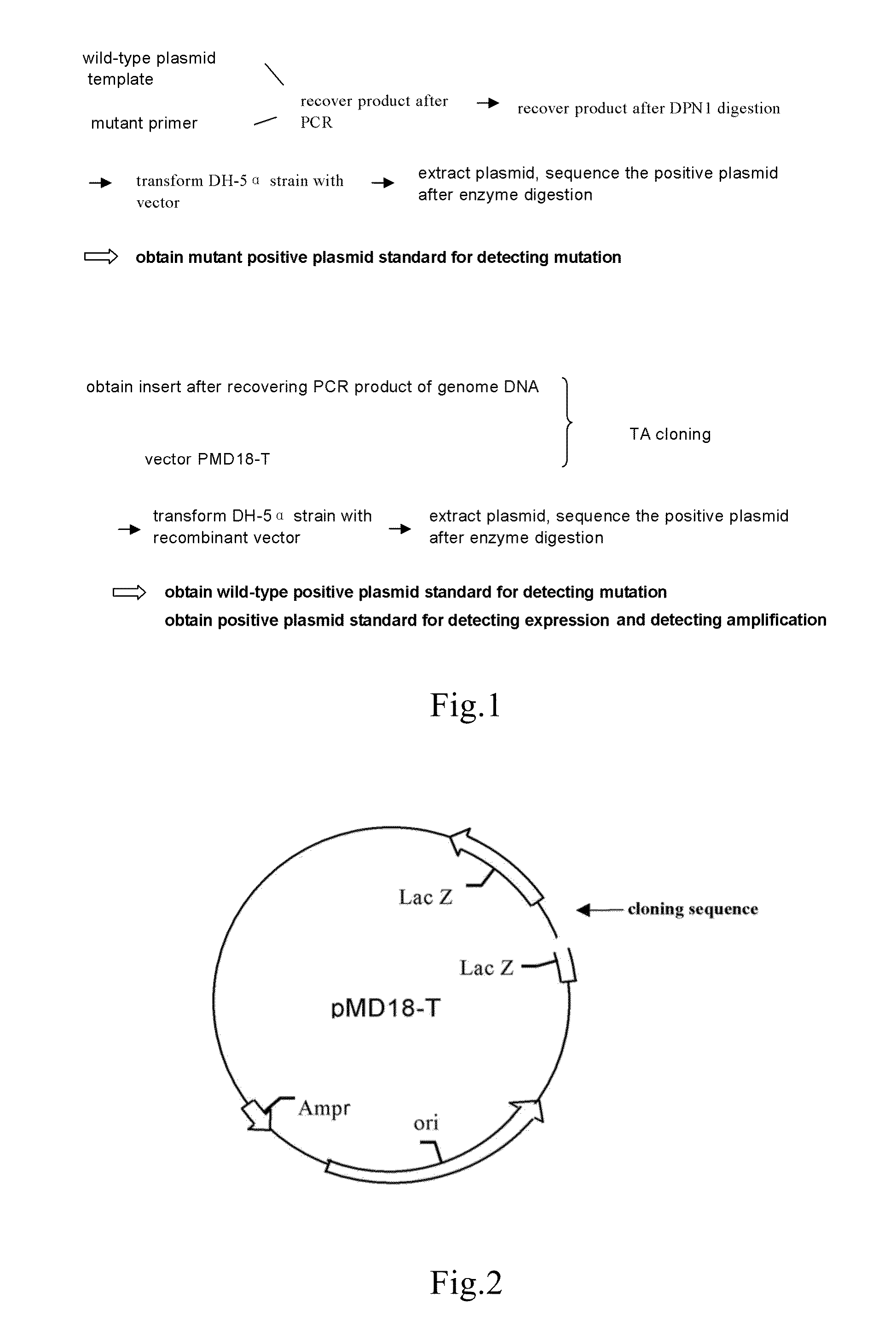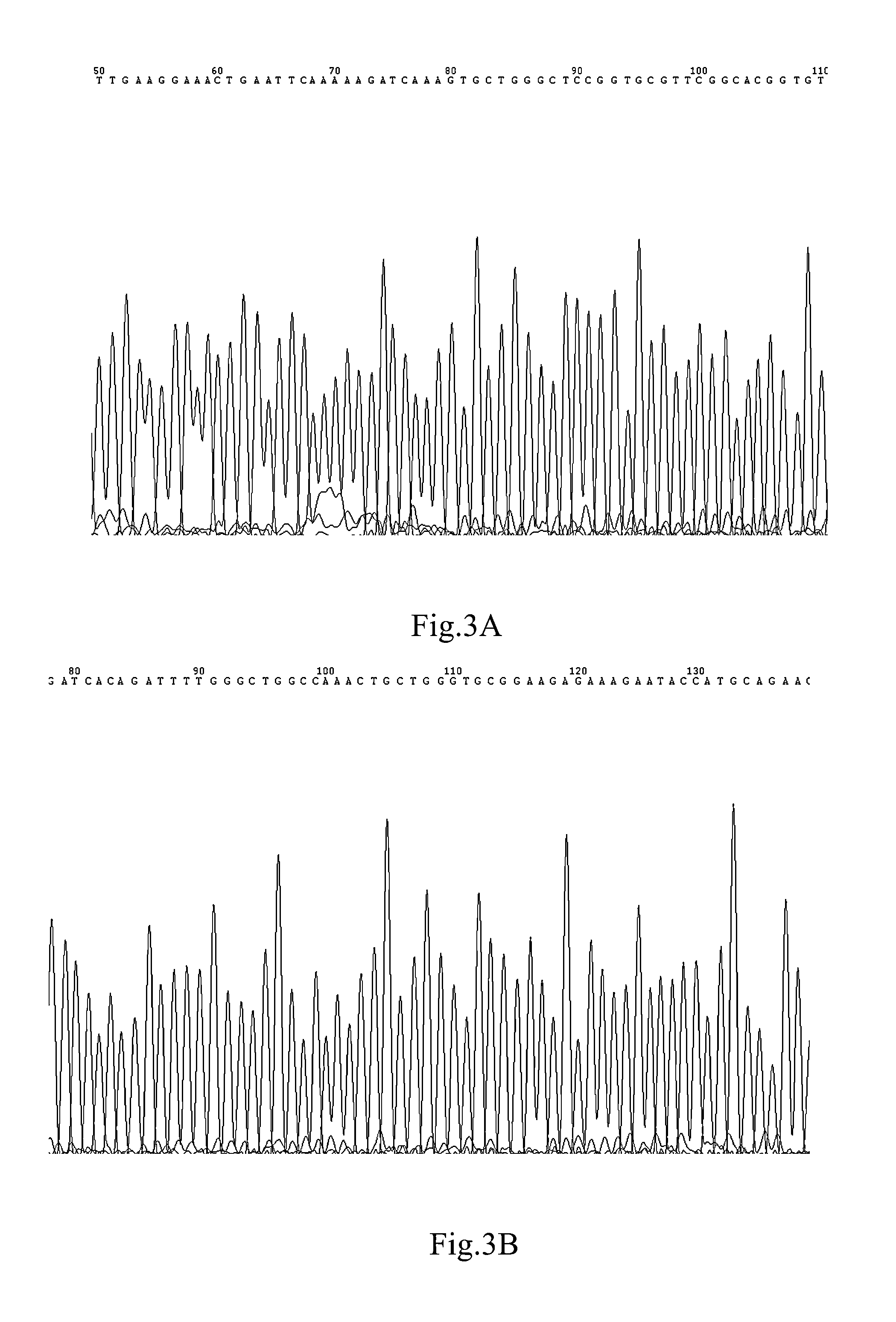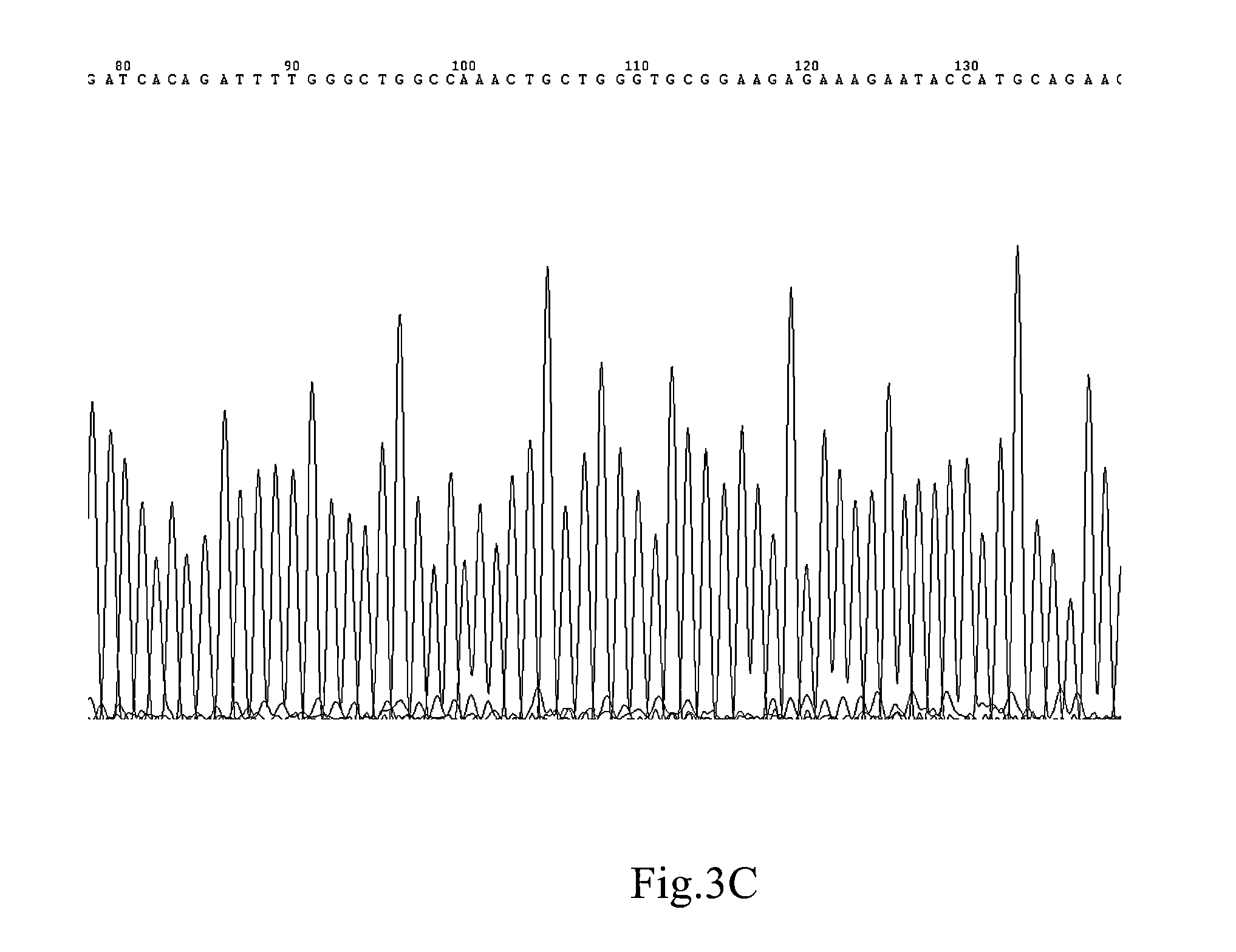Plasmid standard for use in quantitative assays using fluorescent quantitative PCR
- Summary
- Abstract
- Description
- Claims
- Application Information
AI Technical Summary
Benefits of technology
Problems solved by technology
Method used
Image
Examples
example 1
Extraction and Preparation of Nucleic Acid from Human Cell Lines, Fresh Human Tumor Tissues, Peripheral Blood, and Paraffin Embedded Tissues
[0058]1. Extraction of DNA or RNA
[0059]Nucleic acid extracting kit from Qiagen Inc., Promega Inc., or Roche Inc. can be used to extract nucleic acid from the samples. Content and purity of the extracted nucleic acid can be determined by using Nanodrop ND 1000 (Gene Inc.):
[0060]DNA: OD260 / OD280=1.8±0.1, OD260 / OD230=2.0±0.1;
[0061]RNA: OD260 / OD280=2.0±0.1, OD260 / OD230=2.0±0.10
[0062]2. Synthesis of cDNA
[0063]Use M-MLV reverse transcriptase to perform reverse transcription. The steps and reaction system are as in Table 1:
TABLE 1reverse transcription system (10 μl) and stepsreagentamount (μl / tube)RNA template5.5OligodT0.470° C. denature 5 min, ice bath 2-5 min, add the following:5 X buffer2dNTP(5 mM)1DEPC water0.35RNasin(40 U)0.25MLV RT-enzyme0.5total1037-42° C. 60-90 min, 70° C. 5 min.
example 2
Preparation of Positive Standard for EGFR Mutant Test
[0064]1. Construction of wild-type plasmids (FIG. 1, FIG. 2)
[0065]1.1 Preparation of the Vector
[0066]TA cloning vector pMD18-T was purchased from TAKARA Inc.
[0067]1.2 Preparation of the Insert
[0068]The insert is prepared using PCR. The template of PCR is the sample genome DNA extracted in Example 1. The reaction system and amplification condition are shown in the following tables (Table 2, Table 3 and Table 4):
TABLE 2PCR reaction system (50 μl)reagentsamount(μl / tube)double-distilled water29.7510x buffer (free of Mg2+)5MgCl2 (25 mM)7.5dNTP (10 mM)1.25upstream primer (25 μM)1.25downstream primer (25 μM)1.25Taq enzyme1DNA template3total volume50
TABLE 3PCR amplification conditionstepcyclestemperature and timestep 1195° C., 1-5 minutesstep 220-3095° C., 10-15 seconds; 55-65° C., 30-60 seconds
TABLE 4PCR primersnamesequenceE18-F1GAGGATCTTGAAGGAAACTG(SEQ ID NO: 2)E18-F2CCAGCTTGTGGAGCCTCTT(SEQ ID NO: 3)E18-R1GCCAGGGACCTTACCTTAT(SEQ ID NO: ...
example 3
Preparation of Positive Standard for KRAS Mutant Test
[0080]1. Construction of Wild-Type Plasmids (FIG. 1, FIG. 2)
[0081]1.1 Preparation of the Vector
[0082]TA cloning vector pMD18-T was purchased from TAKARA Inc.
[0083]1.2 Preparation of the Insert
[0084]The insert is prepared using PCR. The template of PCR is the sample genome DNA extracted in Example 1. The reaction system and amplification condition are shown in the following tables (Table 2, Table 3 and Table 6):
TABLE 6PCR primersnamesequenceKRAS-F1CCTCTATTGTTGGATCATATT(SEQ ID NO: 25)KRAS-F2AATGACTGAATATAAACTTGTGGTA(SEQ ID NO: 26)GTKRAS-R1TGACTGAATATAAACTTGTGGT(SEQ ID NO: 27)KRAS-R2AAATGATTCTGAATTAGCTGTATCGT(SEQ ID NO: 28)
[0085]1.3 After recovering the target fragment using QIAgen Gel Recover Kit, insert said fragment into pMD18-T (purchased from TAKARA Inc.) by TA colonizing.
[0086]1.4 Amplify the constructed plasmid in E. coli DH5α strain, and harvest by extraction and purification (the methods are showed in Molecular Cloning, A La...
PUM
| Property | Measurement | Unit |
|---|---|---|
| Temperature | aaaaa | aaaaa |
| Molar density | aaaaa | aaaaa |
| Molar density | aaaaa | aaaaa |
Abstract
Description
Claims
Application Information
 Login to view more
Login to view more - R&D Engineer
- R&D Manager
- IP Professional
- Industry Leading Data Capabilities
- Powerful AI technology
- Patent DNA Extraction
Browse by: Latest US Patents, China's latest patents, Technical Efficacy Thesaurus, Application Domain, Technology Topic.
© 2024 PatSnap. All rights reserved.Legal|Privacy policy|Modern Slavery Act Transparency Statement|Sitemap



